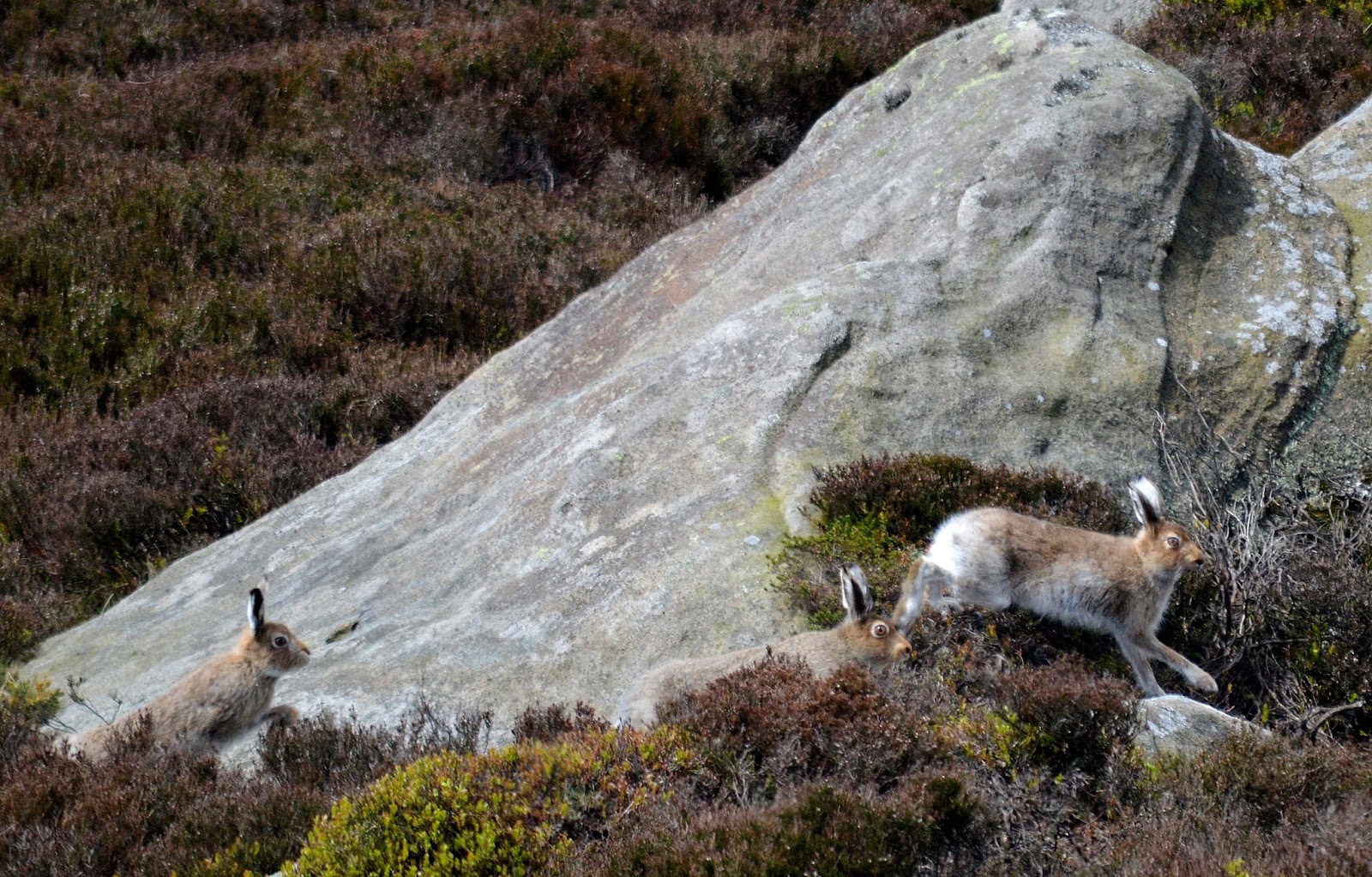...I'd been itching to get back out onto hills/sea ever since settling back into the grey of Birmingham city life.
And whatever Eliot might have said, April is an enormously under-rated moorland month. People flock to hills in August, but as far as birds and animals are concerned there's no less interesting month. Late April, on the other hand, features more activity than almost all other times of year. This is especially true of recent years in the Dark Peak, where a National Park wader recovery project has done amazing things for the moorland. Curlew, golden plover, skylark and short-eared owl used to be remarkable sights, but their sounds now fill the air almost constantly in certain places. Hence this post won't feature any mountains, but lots of seasonal spring creatures.
I grew up on the edge of the Peak District, and the golden plover - often heard but rarely seen - was a kind of mythologised feature of my childhood. Although I've never before gone anywhere looking for specific birds or seeking particular photos, I'd felt recently that I'd really like a picture of one of these evocative creatures - especially since I hadn't seen one for a decade or more. I'd even looked up the particular groundcover - low sward of sphagnum moss and cotton grass - that would make the most promising place to find some.
About lunchtime, sat at my desk in Birmingham, I realised the day was going to be nice and the night was going to be dry. I decided to spend a night, as carefully and unobtrusively as possible, in a sleeping bag on Bleaklow. This is obviously a very sensitive time to overnight on what are essentially curlew and plover breeding grounds, so I'd choose my spot very carefully, inside a peat hag rather than on the open moorland and far from any wader alarm calls. I certainly wouldn't take a tent up at this time of year.
I parked in Old Glossop, next to the Queen's Pub (where I worked behind the bar as a teenager) - there was plenty of evidence of spring in the chiff chaffs flitting through the foliage by the banks of Glossop brook:
One reason I've not yet started hankering after a long lens (i.e. over 300mm) is that with
standard-length lenses photos often feature birds and animals
interacting with the photographer, as the chiff chaff above was very clearly
doing (that's me reflected in its eye).
This is all very familiar territory (I used to come up here during my GCSE & A level revision, trying to memorise physics formulae and details of 20thC history). The farmland on the walk up was full of the area's distinctive black-faced lambs...
Most of the time hares are only seen individually, fleeing your arrival, but if you hang around until they've forgotten you're there they reveal much more communal and playful habits:
For the next hour or so, as I walked up in the direction of Bleaklow Head, that arrival was repeated over and over again. I tried in the photos below to give some sense of the kind of habitat plovers favour:
This is a great spot to see Short Eared Owls (the most spectacular Peak District bird, and one wonderfully captured by a photographer I'm totally in awe of, David Cookson) but none today. It's also worth looking out for little owls (though I got this pic on a different day):
I spent the evening reading some of Basil Bunting's translations amidst the fresh smell of million-year-old peat while the sound of curlew, grouse and pipit continued, in the distance, long after dark.
Here's what Wainwright had to say about Bleaklow (in his guide to the Pennines):
'Nobody loves Bleaklow. All who get on it are glad to get off it...the toughest part of the Pennine way...mucky, too often belaboured by rain and wind and frightening in mist'.
Perhaps it's this inhospitable nature that means Bleaklow has a concentration of moorland wild things far greater than any single spot in Wainwright's beloved Lakes: for that reason it's undoubtedly one of my favourite places in England. It might be because writers like Wainwright have established the mildly exaggerated notion that the terrain is 'difficult' that most walkers stick resolutely to the paved Pennine Way and miss out on the abundant, pathless moorland that stretches away in all directions. Then again, as surprisingly frequent Mountain Rescue callouts demonstrate, getting lost in adverse conditions is easy even in this relatively gentle area - presumably down to the high number of ill-equipped visitors on a jaunt from nearby Manchester and Sheffield.
I got up with the dawn and headed down, through still more curlew, past a raven then a couple of kestrels on Yellow Slacks. Since dawn was before 5, this meant I could set off, before 8, for a day's work back down the M6. Dare I say it? 'I love Bleaklow' and I was very sad to get off it.
Only the following week did I discover the thing that would have made the perfect end to the day:
By that time, there were wader chicks, like this lapwing (green plover), out and about...

.JPG)


%2BTrips%2B(18).JPG)













.JPG)

.JPG)
.JPG)
.JPG)









No comments:
Post a Comment